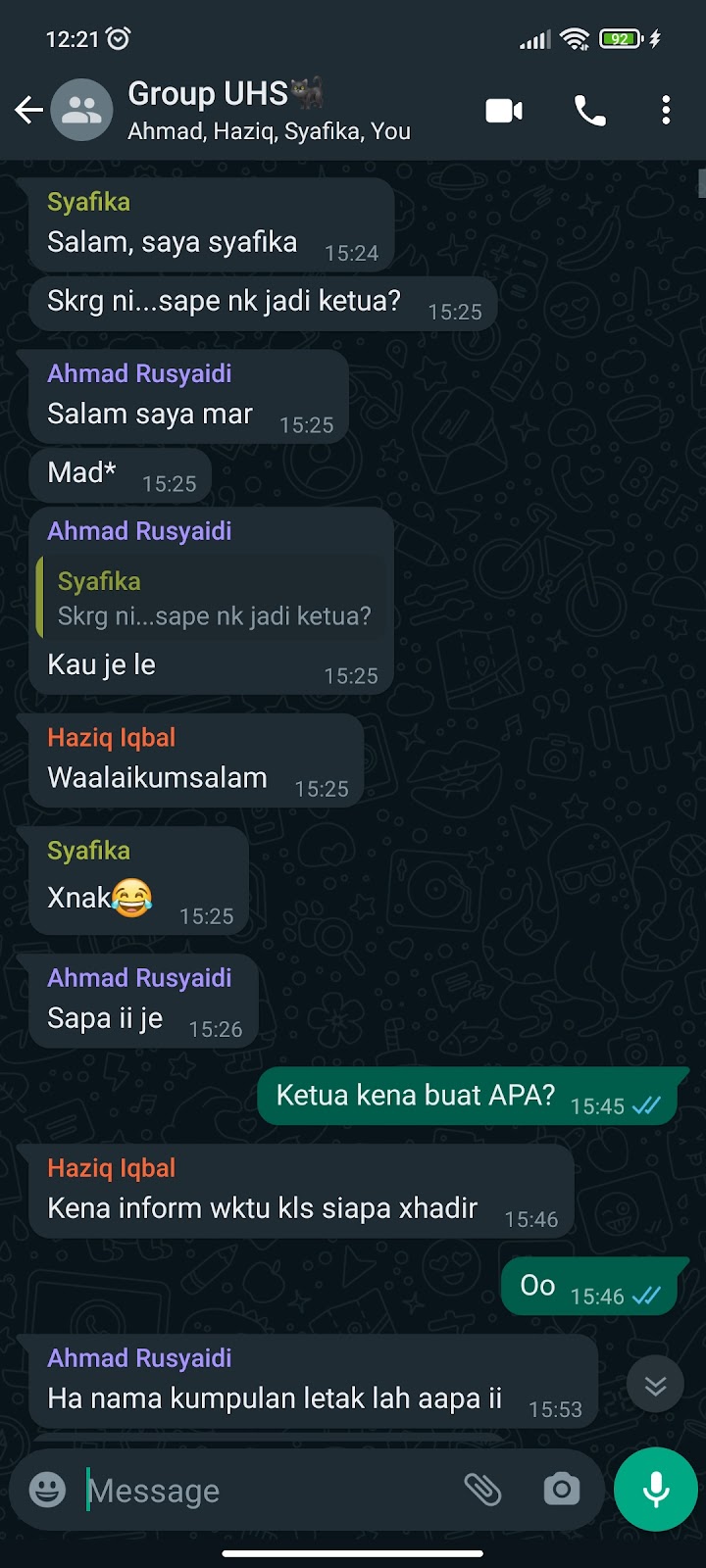SEARCH FOR INFORMATION AND INFORMATION FOR SOLUTIONS
What is Coronavirus?
Coronavirus disease (COVID-19) is an infectious disease caused by the SARS-CoV-2 virus.
Most individuals who are sick with COVID-19 will experience mild to moderate symptoms and recover without special treatment. However, some individuals will experience serious illness and need medical attention.
These viruses can spread from the mouth or nose of individuals infected in small liquid particles when they cough, sneeze, talk, sing or breathe. These particles are made up of larger respiratory droplets to the finer aerosols.
You can be infected by inhaling the virus if you are near a COVID-19 infected person or by touching a contaminated surface, then touching your eyes, nose or mouth. These viruses are more easily spread inside buildings and in crowded areas.
With the country hit by the Covid-19 pandemic since a year ago, causing drastic changes in Teaching and Learning (PdP) methods from face to face to online through home-based learning and teaching (PdPR), teachers and students, as well parents.
Although at the early stage, there we are various obstacles and difficulties to implement the home-based learning and teaching (PdPR), over time, these problems have we overcome with variant initiative.
Although face-to-face learning is still accepted as the best education method, PdPR, whose implementation can be further improved either online or offline, is the most appropriate method to ensure children are not left behind in their studies during the Covid-19 threat.
With the increasing trend in Covid-19 cases, which has now reached five figures, PdPR, which is now in its second year of implementation, is the best and safest initiative to curb the spread of Covid-19 among school children.
However, PdPR sessions are very different and less efficient for the students due to several factors that may disrupt their concentration during the PdPR session
From The Star Newspaper :
KUALA LUMPUR: Implementation of the home-based teaching and learning (PdPR) for students nationwide is not only a challenge to parents but teachers and students as well as they have to face various issues.
A teacher at a school in Putrajaya said the attendance of online classes among students from the “back classes” was quite low.
“For example, student attendance from the first class is 24 out of a total of 27, while the rate among students from the back classes is six out of 19 people.
“Students who are good in their studies will survive while the weak will continue to be left behind.
“In school, teachers can call students face to face and motivate them, but when the class is conducted online, it depends on the students themselves, their preparation in terms of gadgets, data plan and self-motivation, ” he said.
The teacher, who declined to be named, said other challenges of online classes included the monitoring of the students’ discipline and focus on their studies.
He said there were students who opened two windows or applications on their laptop screen – one for online class and the other for online games.
Syakir Fazly, 15, a Form Three student of a school in Selangor, finds it tough to focus on his lessons when studying at home because of his “noisy siblings”.
“It is difficult for me to listen to the teacher and other students. When a student has a question, the teacher just continues to teach because the teacher is unable to hear the question and the student’s voice.
“Apart from that, not everything that is taught by the teacher can be clearly understood because the telephone screen is small.
“The link provided by the teacher is always difficult to access, ” he added.
A private sector employee, Shahidah Musa, in her late 30s, who has children attending Years One and Two in Selangor, said there were teachers who were inconsistent and kept changing the social media platforms and mediums in handling their PdPR classes.
“There are times when the teacher uses the WhatsApp platform, then switches to Telegram.
“The learning medium also changes... from the Zoom app to Google Meet and video calls.
“Apart from that, the time the class starts also keeps changing. The first day, it was at 9.30am, the second day at 10am.
“Parents have to always wait for information and updates from teachers, ” she added.
Shahidah, who has bought mobile phones for her children to facilitate their PdPR lessons, said there were parents who needed to learn Google classroom applications and so on to enable them to help their children with their assignments or homework, especially those that require them to record videos.
Businesswoman Norazah Muda, 49, said her youngest son, who is supposed to enter Form One in a private religious residential school in Negri Sembilan, had to start his PdPR lesson.
“I am worried about buying him a mobile phone or laptop because during the MCO last year, I found him to be very obsessed with video games and he even shopped online when he had access to the gadget, ” she said, adding that her son had used her handphone to follow the PdPR lesson and do his homework during the last MCO.
Hairunnisak Aman, 39, from Johor, who has three children in primary school, said PdPR not only demanded high discipline from students, but parents too had to play their role to ensure their children stay focused.
“It is quite challenging because it requires a high level of commitment to participate in the Google Meet, Google Classroom, Telegram or WhatsApp sessions for three children who are all in primary school at the same time.
“However, for now, I can still find time to monitor them, ” said the food caterer. — Bernama
Reference:https://www.thestar.com.my/news/nation/2021/01/25/teachers-students-and-parents-facing-pdpr-challenges




Comments
Post a Comment